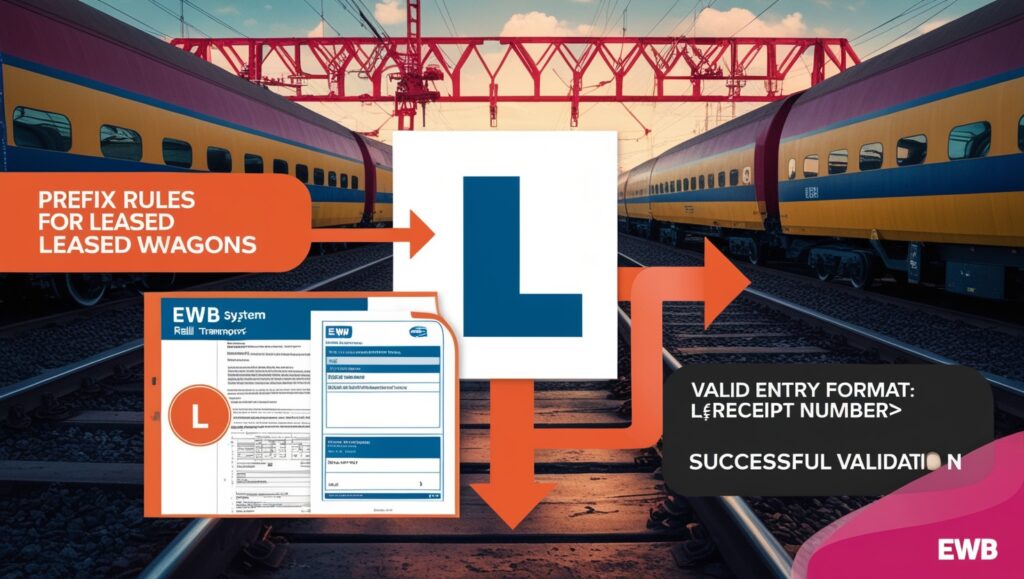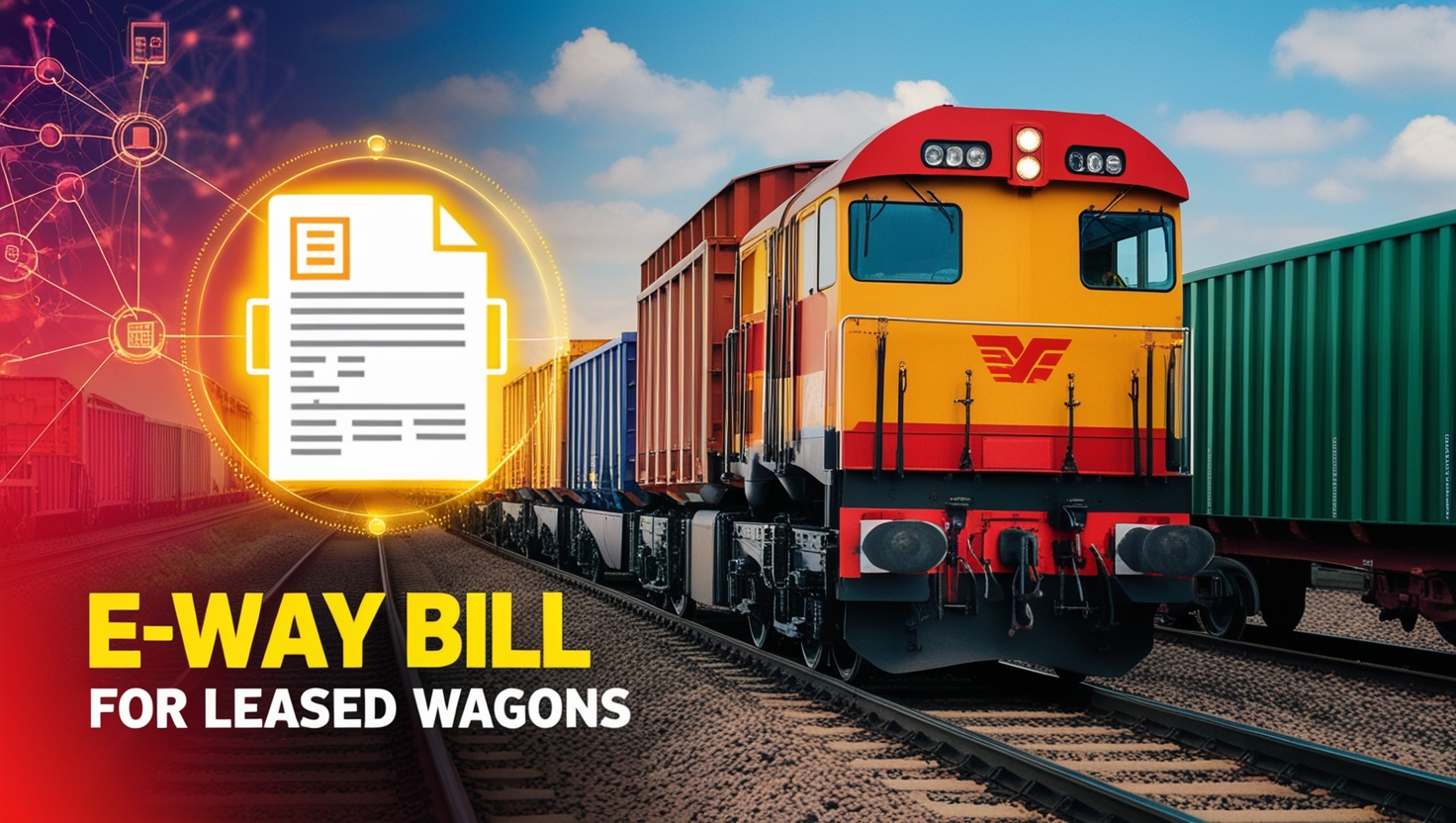Entry of Receipt Numbers in the E-Way Bill System for Leased Wagons
The E-Way Bill (EWB) system has revolutionized the transportation and logistics sector by ensuring smooth tracking and movement of goods. With the increasing use of rail transport for goods, including through Leased Wagons, it is vital for taxpayers to understand and comply with the requirements of entering receipt numbers correctly. This article provides a detailed overview of the guidelines issued for the Entry of Receipt Numbers in the E-Way Bill System for Leased Wagons and their significance for taxpayers.
What Is the Purpose of the Advisory?
The latest advisory issued by the GST Network (GSTN) focuses on streamlining the process of entering Receipt Numbers into the EWB system. It aims to ensure the accurate processing of E-Way Bills and seamless transportation of goods via rail, particularly for Leased Wagons. The standardized entry of receipt numbers enhances data accuracy and reduces the risk of errors or delays in goods movement.
In addition to earlier advisories for Parcel Way Bills (PWB) under the Parcel Management System (PMS) and Railway Receipts (RR) under the Freight Operations Information System (FOIS), this new advisory emphasizes specific guidelines for Leased Wagons.

Key Guidelines for Entry of Receipt Numbers
1. Prefixing Receipt Numbers
Taxpayers transporting goods through Leased Wagons are required to:
- Prefix their Receipt Numbers with the identifier “L” when entering them into the EWB system.
- Similarly, those using other rail transport modes should use prefixes such as:
- “P” for PWB numbers under the PMS.
- “F” for RR numbers under FOIS.
These prefixes ensure proper validation and help differentiate between transport modes. This system-wide change will be mandatory starting January 1, 2025.
2. Updating Part-B of the EWB for Rail Transport
When generating an EWB for goods transported via rail, taxpayers must:
- Select the transport mode as “Rail” in Part-B of the EWB using the “Multi-Transport Mode” option available on the EWB portal.
- Ensure that the Receipt Number is entered with the prefix “L” to indicate Leased Wagons.
3. Format for Receipt Number Entry
To maintain consistency, taxpayers must adhere to the following format:
L <Receipt Number>
For example:
- If the Receipt Number is 123456789, it should be entered as L123456789 in the EWB system.

4. Validation Process in the EWB System
The system will validate each Receipt Number entered by taxpayers. This includes:
- Cross-checking the entry against the database of Receipt Numbers for Leased Wagons.
- Issuing alerts for discrepancies such as mismatched or missing numbers.
- Promptly notifying taxpayers to correct errors, ensuring accurate data entry.
5. Assistance and Support
Taxpayers requiring help or clarification can:
- Raise a ticket with the EWB support team via the support portal.
- Provide details of their entry, including the prefix used, for quick resolution of issues.
These measures aim to enhance user experience and facilitate timely resolution of concerns.
Why Are These Guidelines Important?
The guidelines for the Entry of Receipt Numbers in the E-Way Bill System for Leased Wagons are essential for several reasons:
- Improved Accuracy:
- The prefixing system reduces errors in identifying the transport mode and ensures data consistency.
- Efficient Processing:
- Accurate Receipt Numbers allow the EWB system to process information more efficiently, avoiding delays in transportation.
- Compliance with GST Rules:
- Following these guidelines ensures compliance with GST regulations, minimizing legal and logistical challenges.
- Enhanced Tracking:
- Proper entry of Receipt Numbers improves the ability to track goods in real-time, enhancing transparency in the supply chain.
- Streamlined Operations:
- With standardized formats, taxpayers and authorities can work seamlessly, reducing confusion and workload.
Implementation Timeline
The changes to the EWB system will take effect from January 1, 2025. Taxpayers are advised to familiarize themselves with the updated requirements and implement necessary changes to their internal processes beforehand.
How Taxpayers Can Prepare
To ensure smooth adoption of the new guidelines, taxpayers should:
- Update Software and Processes:
- Modify any internal tools or systems to include the required prefixes for Receipt Numbers.
- Train Staff:
- Educate employees responsible for generating EWBs about the new requirements and formats.
- Test the System:
- Conduct trial runs to ensure that the updated process works correctly and complies with GSTN requirements.
- Monitor Updates:
- Stay informed about further advisories or changes to the EWB system by regularly visiting the GSTN portal.
Benefits of Adhering to These Guidelines
Complying with the guidelines for the Entry of Receipt Numbers in the E-Way Bill System for Leased Wagons offers several advantages:
- Seamless Goods Movement:
- Proper data entry prevents delays and ensures goods reach their destination on time.
- Reduced Errors:
- Standardized formats minimize the risk of incorrect or incomplete entries.
- Regulatory Compliance:
- Taxpayers avoid penalties and other consequences by adhering to GST rules.
- Operational Efficiency:
The streamlined process improves overall efficiency in generating and validating EWBs.
Conclusion
The introduction of specific guidelines for the Entry of Receipt Numbers in the E-Way Bill System for Leased Wagons marks a significant step toward enhancing the accuracy and efficiency of the EWB system. By using the correct prefixes and formats, taxpayers can ensure smooth transportation of goods, compliance with GST regulations, and improved supply chain transparency.
Taxpayers are encouraged to familiarize themselves with these requirements and make necessary adjustments before the mandatory implementation date of January 1, 2025. For further support, the EWB support portal remains available to address any queries or concerns.
By adhering to these guidelines, the transport of goods via rail, including through Leased Wagons, will become a more streamlined and error-free process, benefiting taxpayers and the logistics industry alike.
The official source of this article is this website.
For more update GST visit here.









